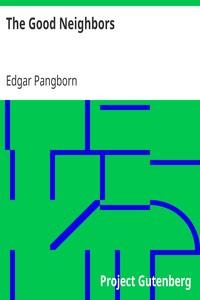Read this ebook for free! No credit card needed, absolutely nothing to pay.
Words: 64734 in 15 pages
This is an ebook sharing website. You can read the uploaded ebooks for free here. No credit cards needed, nothing to pay. If you want to own a digital copy of the ebook, or want to read offline with your favorite ebook-reader, then you can choose to buy and download the ebook.
the leaves at last shrivel, loosen, and their petioles break, it is merely a larger brown nut than usual that falls to the ground, the kernel of which will sprout next June and blossom into the big moth of delicate fawn tints, feathery horned, with those strange isinglass windows in his hind wings.
Luna--the weird, beautiful moon-moth, whose pale green hues and long graceful streamers make us realise how much beauty we miss if we neglect the night life of summer--when clad in her temporary shroud of silk, sometimes falls to the ground, or again the cocoon remains in the tree or bush where it was spun.
But Prometheus, the smallest of the quartet, has a way all his own. The elongated cocoon, looking like a silken finger, is woven about a leaf of sassafras. Even the long stem of the leaf is silk-girdled, and a strong band is looped about the twig to which the leaf is attached. Here, when all the leaves fall, he hangs, the plaything of every breeze, attracting the attention of all the hungry birds. But little does Prometheus care. Sparrows may hover about him and peck in vain; chickadees may clutch the dangling finger and pound with all their tiny might. Prometheus is "bound," indeed, and merely swings the faster, up and down, from side to side.
It is interesting to note that when two Prometheus cocoons, fastened upon their twigs, were suspended in a large cageful of native birds, it took a healthy chickadee just three days of hard pounding and unravelling to force a way through the silken envelopes to the chrysalids within. Such long continued and persistent labour for so comparatively small a morsel of food would not be profitable or even possible out-of-doors in winter. The bird would starve to death while forcing its way through the protecting silk.
These are only four of the many hundreds of cocoons, from the silken shrouds on the topmost branches to the jugnecked chrysalis of a sphinx moth--offering us the riddle of a winter's shelter buried in the cold, dark earth.
Is everything frozen tight? Has Nature's frost mortar cemented every stone in its bed? Then cut off the solid cups of the pitcher plants, and see what insects formed the last meal of these strange growths,--ants, flies, bugs, encased in ice like the fossil insects caught in the amber sap which flowed so many thousands of years ago.
When the fierce northwestern blast Cools sea and land so far and fast, Thou already slumberest deep; Woe and want thou canst outsleep.
Emerson.
CHAMELEONS IN FUR AND FEATHER
The colour of things in nature has been the subject of many volumes and yet it may be truthfully said that no two naturalists are wholly agreed on the interpretation of the countless hues of plants and animals. Some assert that all alleged instances of protective colouring and mimicry are merely the result of accident; while at the opposite swing of the pendulum we find theories, protective and mimetic, for the colours of even the tiny one-celled green plants which cover the bark of trees! Here is abundant opportunity for any observer of living nature to help toward the solution of these problems.
In a battle there are always two sides and at its finish one side always runs away while the other pursues. Thus it is in the wars of nature, only here the timid ones are always ready to flee, while the strong are equally prepared to pursue. It is only by constant vigilance that the little mice can save themselves from disappearing down the throats of their enemies, as under cover of darkness they snatch nervous mouthfuls of grain in the fields,--and hence their gray colour and their large, watchful eyes; but on the other hand, the baby owls in their hollow tree would starve if the parents were never able to swoop down in the darkness and surprise a mouse now and then,--hence the gray plumage and great eyes of the parent owls.
The most convincing proof of the reality of protective coloration is in the change of plumage or fur of some of the wild creatures to suit the season. In the far north, the grouse or ptarmigan, as they are called, do not keep feathers of the same colour the year round, as does our ruffed grouse; but change their dress no fewer than three times. When rocks and moss are buried deep beneath the snow, and a keen-eyed hawk appears, the white-feathered ptarmigan crouches and becomes an inanimate mound. Later in the year, with the increasing warmth, patches of gray and brown earth appear, and simultaneously, as if its feathers were really snowflakes, splashes of brown replace the pure white of the bird's plumage, and equally baffle the eye. Seeing one of these birds by itself, we could readily tell, from the colour of its plumage, the time of year and general aspect of the country from which it came. Its plumage is like a mirror which reflects the snow, the moss, or the lichens in turn. It is, indeed, a feathered chameleon, but with changes of colour taking place more slowly than is the case in the reptile.
Free books android app tbrJar TBR JAR Read Free books online gutenberg
More posts by @FreeBooks

: The Iron Pirate: A Plain Tale of Strange Happenings on the Sea by Pemberton Max - Sea stories; Pirates Fiction Pirates Buccaneers Corsairs etc.










